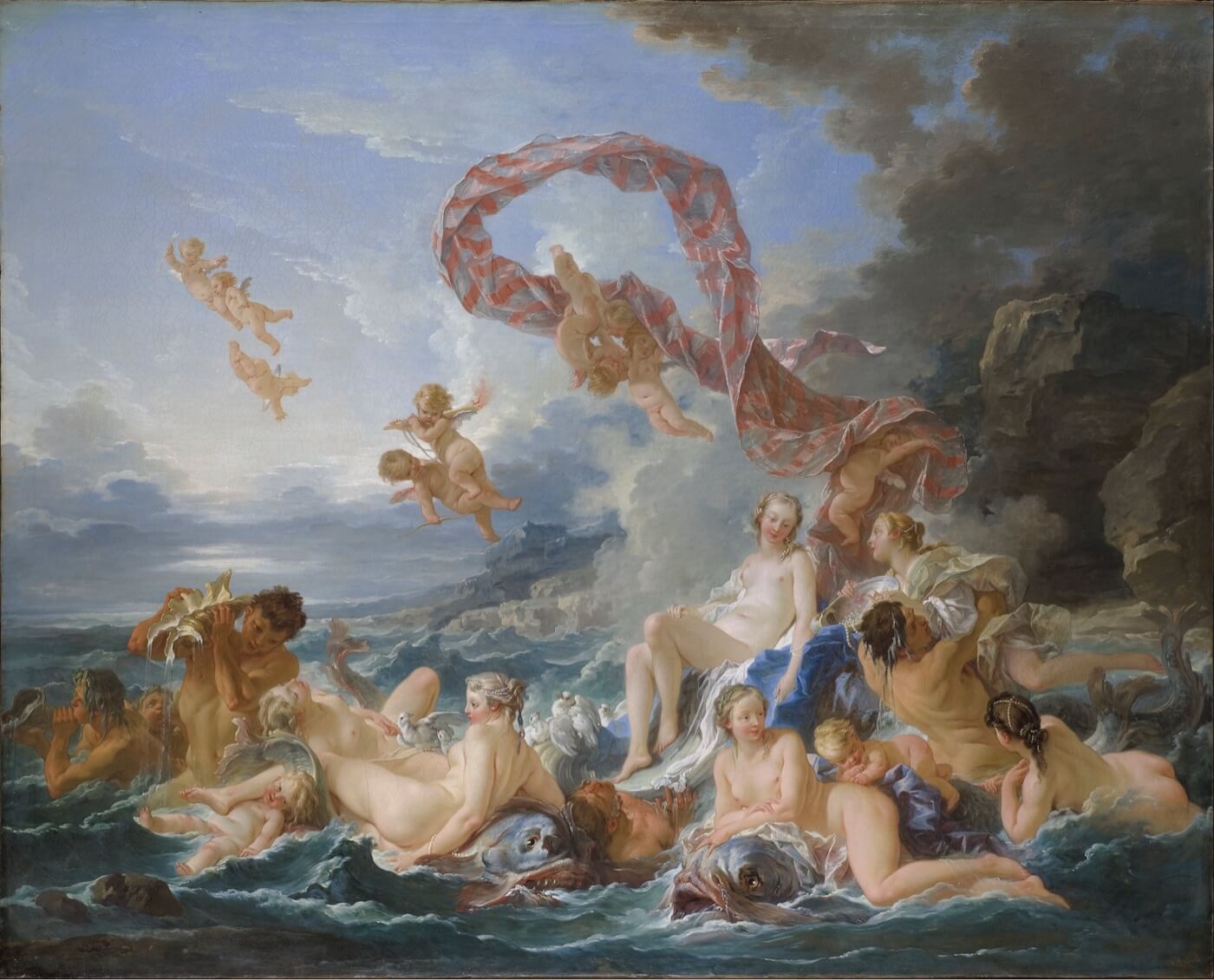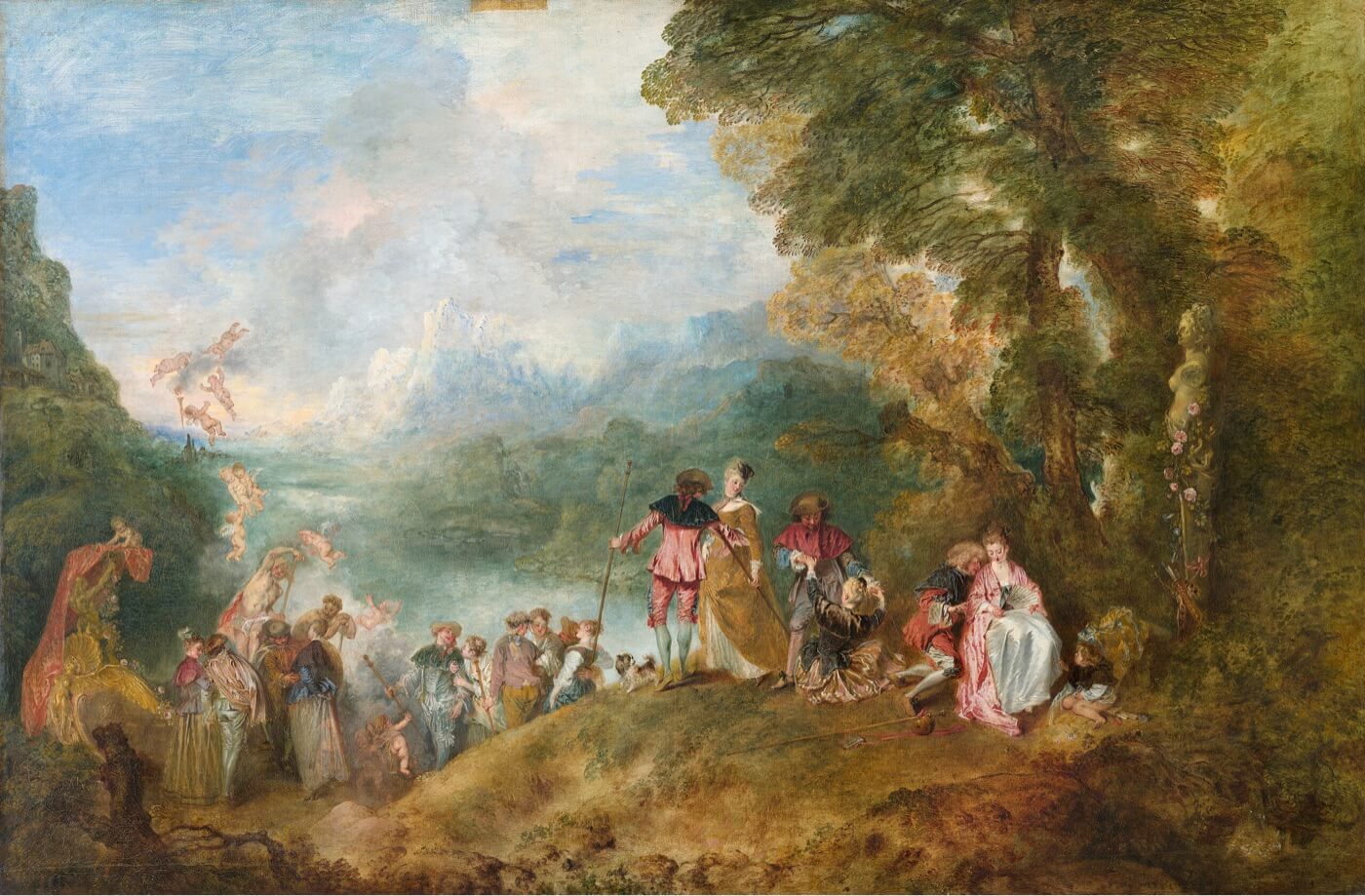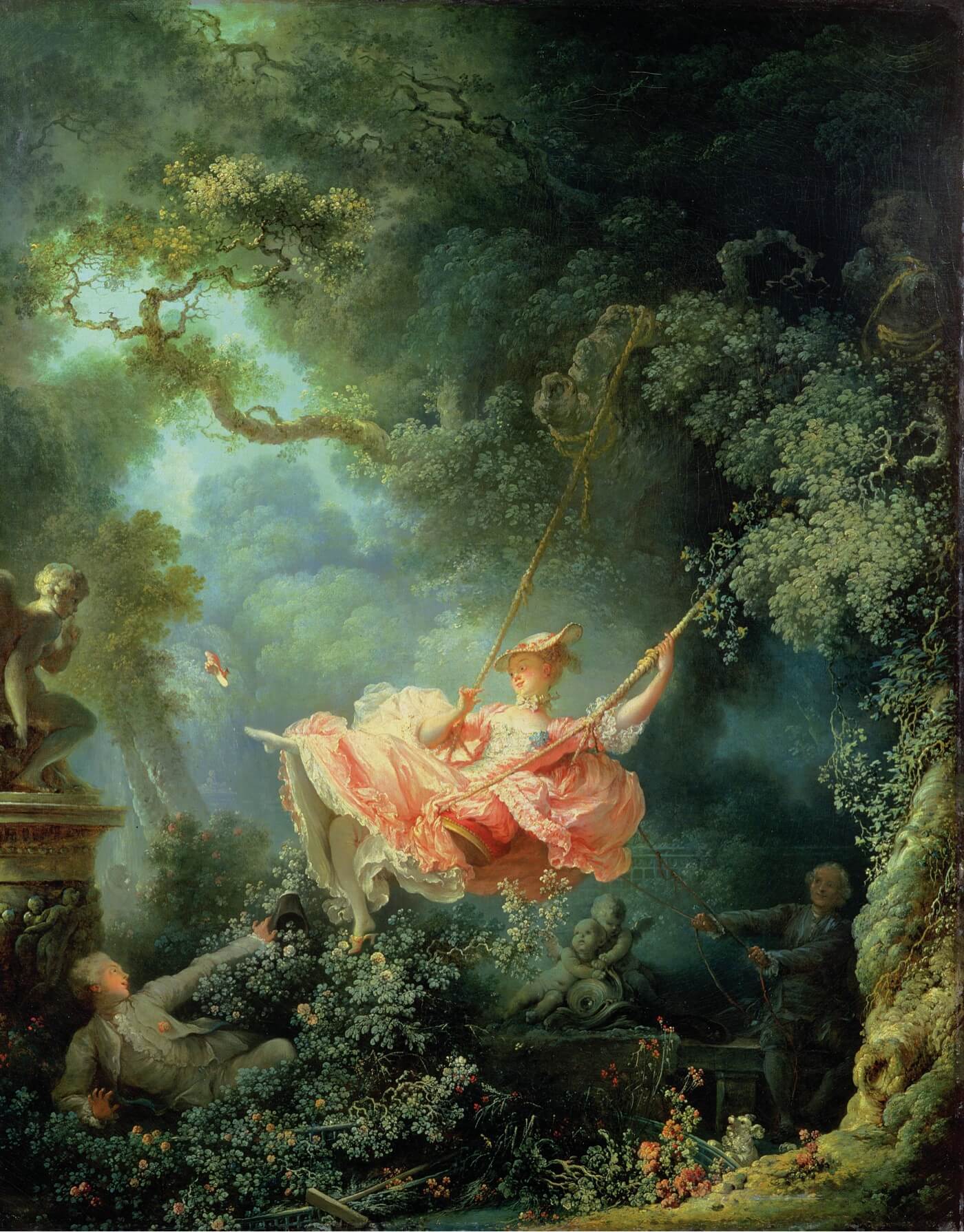The Rococo movement is marked by levity and an excitement for life. Branching out after a more stern artistic period (Baroque), Rococo art and Rococo architecture changed the landscape of French art forever. As such, its legacy have made a lasting impact on a number of art forms today. Read on to discover how.
What is Rococo?
Let's define Rococo
Having arrived to the art scene closely after Baroque, Rococo can sometimes be difficult to spot. But a few distinct characteristics set it apart from all the rest. For more, check out our index of art styles covering more specific and noteworthy movements or our art history timeline for additional context.
ROCOCO DEFINITION
What is Rococo?
Rococo is a flamboyant yet light-hearted form of art often characterized by whites and pastel colors, gilding, and curvaceous lines. The Rococo style typically depicts scenes of youth, love, and nature, and elicits motion and drama. The Rococo era lasted roughly from the 1730s to the mid 1780s and the style can be found in painting, architecture, and more. Rococo comes from the French word “rocaille” meaning rubble or rock. This refers to pebble or shell-work in fountains or grottos, and describes the serpentine pattern often seen in the Rococo era.
Rococo Art Characteristics:
- Scenes of nature and frivolity
- Asymmetrical
- Ornate details
- Bright pastel colors
Rococo vs. Baroque
Roots of Rococo
After the death of King Louis the XIV, the French elite shifted away from more ornamental style and more toward intimate decor, literally leaving Versailles to Parisian manors. They became the urban upper class.
Baroque, which had been among the most (if not the most) favored style at the time, was formal, grandiose, and stern. And the French upper class began to opt for softer, elegant, and asymmetrical adornments.

Triumph of Venus, 1740 François Boucher
Rococo started as an architectural style but then evolved into a form of playful yet exquisitely detailed painting. It evokes levity and frivolity with its cotton candy-like colors and youthful depictions of nature. This became especially popular in around 1730, when it quickly began to spread to Austria, Germany, and other European countries. Rococo began to fade out of vogue in around 1770, when more “sobering” styles such as Neoclassicism took over.
Here’s a quick timeline of the style:
1710s–1730
Baroque begins to fall out of style as a transfer in power in France prompts a brighter aesthetic: Rococo.
1730–1750s
Rococo dominates the art scene of France, and spreads to other European entities like Italy and Germany.
1760s–1780s
Rococo’s popularity diminishes as prominent philosophers and artists begin to criticize it as unserious. It died first in France, and eventually fell out of fashion in its last strongholds in Germany and Italy.
Related Posts
Popular Examples of Rococo
Examples of Rococo paintings
Alongside Impressionism, Rococo is well-regarded as a most influential French art movement. It built off of the darker, more emotive dark as it helped the art world move into a brighter period, and certain works emphasize this idea.
Jean-Antoine Watteau is credited with the birth of Rococo. He also championed fête-galante, a particular focus on garden parties and other such outdoor events as primary subject matter.
His paintings incorporated whimsy like no other, and as such, he has produced some of the most familiar Rococo paintings. One such piece is “The Embarkation for Cythera” (1717).

The Embarkation for Cythera, 1717
Characterized by asymmetry, fluffy blues and pastels, and its idyllic, nature-inspired subject matter, “The Embarkation of Cythera” is one of the most famous Rococo art examples of all time.
Another famous work is “The Swing” (1767-1768) by Jean-Honoré Fragonard.

The Swing, 1767-1768
This piece is marked by its depiction of a lush forest, its clear evocation of motion (and therefore, playfulness) via the woman’s billowing pink dress, and of course its soft color scheme.
Said of this painting: “The decadent composition all but shouts, ‘let them eat cake’,” as it leans into its suggestive nature and even allowed its creator to transition from well-liked historical painter to favorite painter of the elite upper class.
Related Posts
Rococo Today
Rococo Architecture and Furniture
Rococo isn’t just relegated to the canvas. The style can also be found in other media, like architecture and furniture.
The Amalienburg • What does Rococo mean
The Amalienburg located at the Nymphenburg Palace Park in Munich, Germany, has a distinct Rococo style. It was built in 1739, around the height of the art movement. Its exterior has a light pastel pink coating, and its inside is even more gaudy:
This ornate decoration is very typical of the Rococo architecture style. Pretty over the top, right? Rococo furniture is similarly detailed. Take a look at these chairs from the 18th century:

Rococo furniture
These chairs were built by Louis Delenouis, and have all the trappings of the style: bright colors, intricate details. You can see more of the Rococo style in this vase, including a panel painting by John Donaldson.

Examples from the Rococo period
Made in 1763, this vase encapsulates the aesthetic – bright coloring, ornate detailing, frivolous scenery.
Rococo Today
Legacy of the style
Rococo art is a treasured fraction of the French art movement, so it stands to reason the art and architecture of the 18th century themselves are being kept alive in their original form when possible. In addition, there is the beloved period genre in film that adds new life to the style.
Probably one of the more famous recent depictions of Rococo style is the Sofia Coppola film Marie Antoinette. Not only is Rococo a large influence on the historical accuracy of the film’s setting, but the film itself plays on the youthful and edgy spirit the 1700s. Marie Antoinette adds its own jovial spin to the history genre much like how Rococo played on Baroque (its predecessor).
What is Rococo Art • Marie Antoinette
The colors of the film as a whole are almost confection-like, making the film visually delectable and unique. It defies what we see in everyday life through its extravagance, and even stands out among its historical genre film counterparts. In a sort of visual irony, the darkness of some of the film’s events are contradicted by the playfulness of Marie Antoinette’s carefree life.
Marie Antoinette as a historical figure, the key motivators of the Rococo style, and the film Marie Antoinette are fun, breezy, less religion-focused puzzle pieces of art and film history. They all but scream, “Let them eat cake.”
As Marie Antoinette illustrates, Rococo still lives on today. It’s not just relegated to films depicting the time period in which it existed — its influence can be found in artwork which strives to depict lush natural vistas meant to bring joy, and in architecture so ornate you can get lost in it.
UP NEXT
Explore More Styles and Movements
This was just one of many fascinating segments of art history. There are many eras, styles, artists, and movements to discover. Let's continue our study by choosing the next stop on your way to becoming an art aficionado. Below you can visit our Art Styles Index, our Art History Timeline, or choose an individual movement.
Share your vision with elegant shot lists and storyboards.
Create robust and customizable shot lists. Upload images to make storyboards and slideshows.

I appreciated this detailing of main features of rococo art especially ending with the film. At times the english grammar is wrong but maybe english is not your first language.